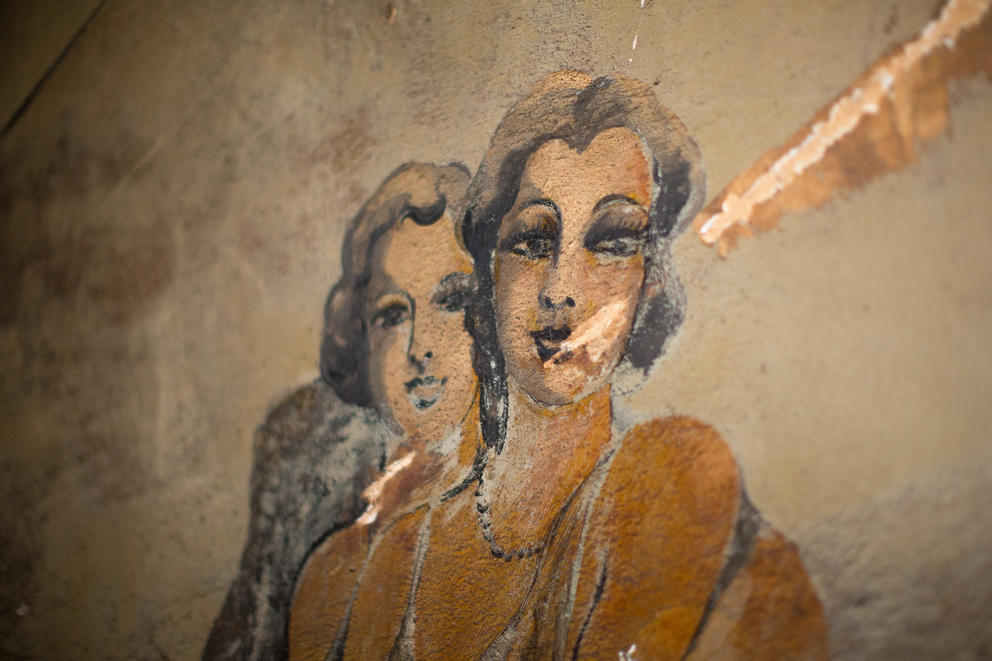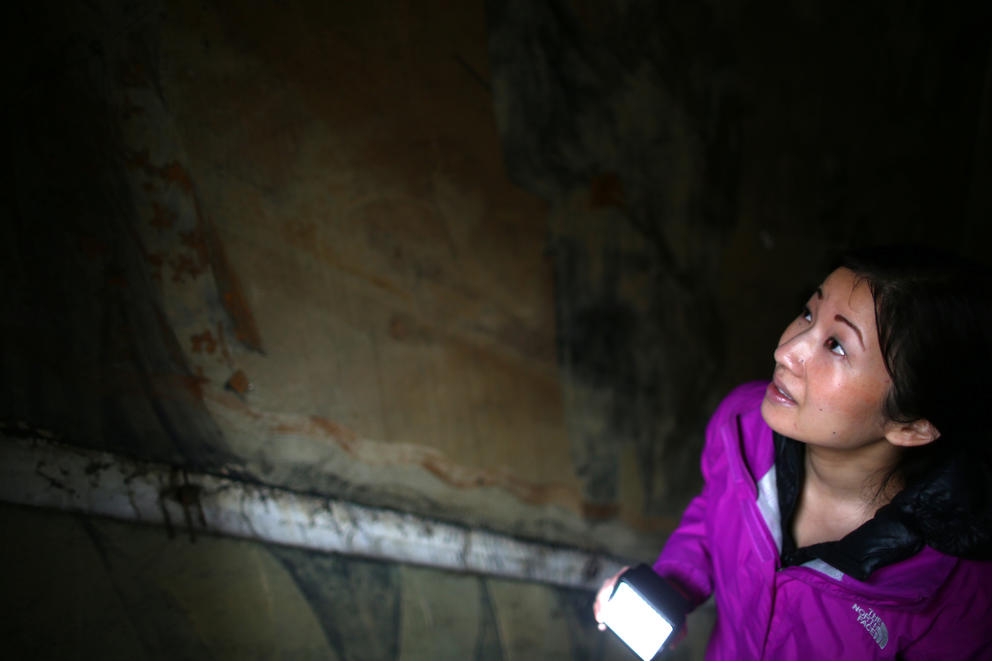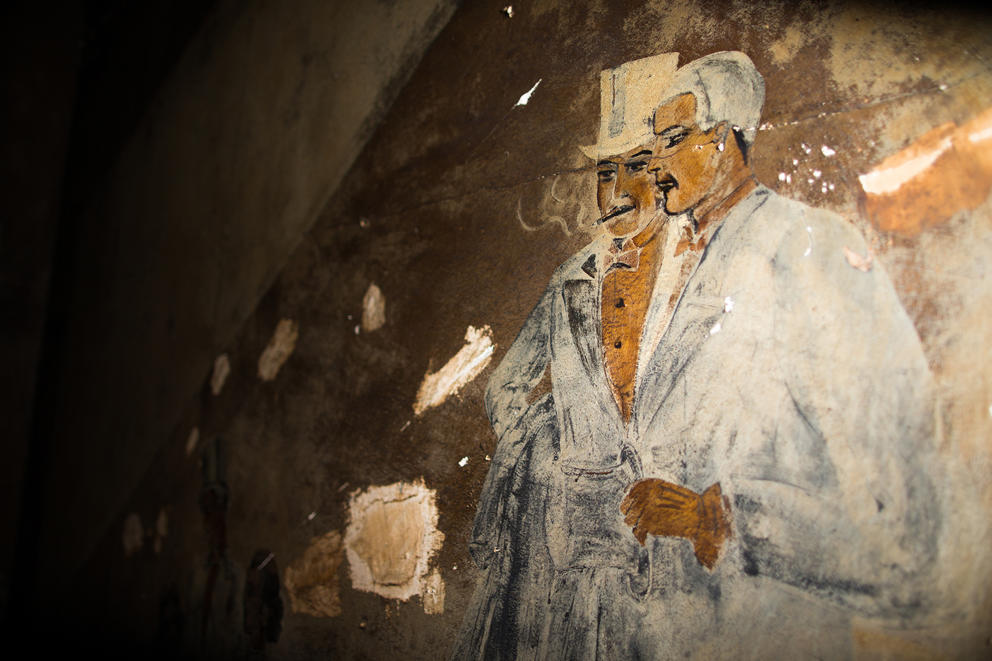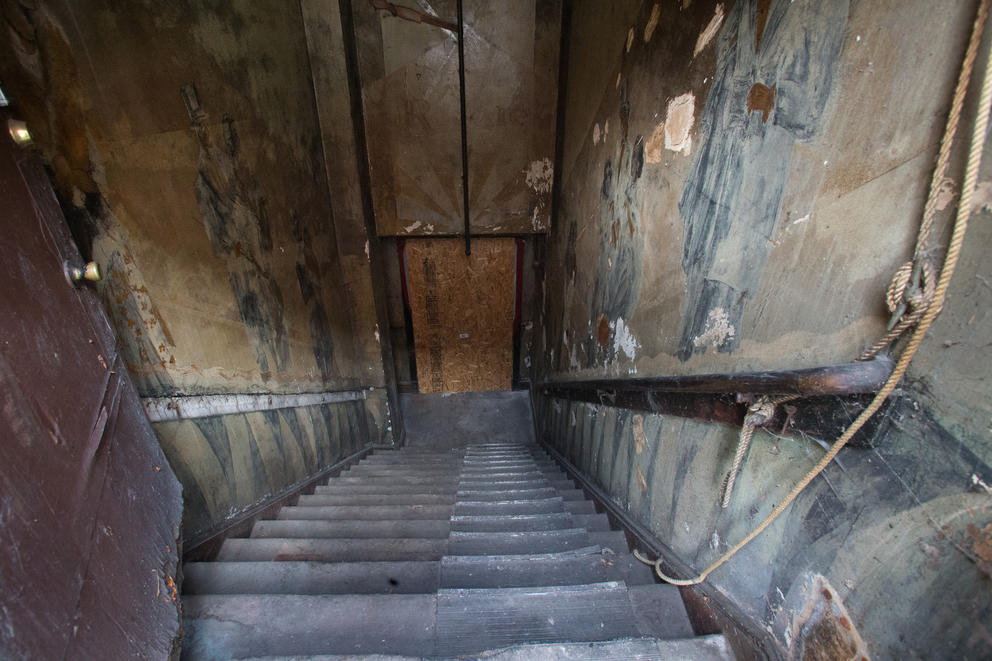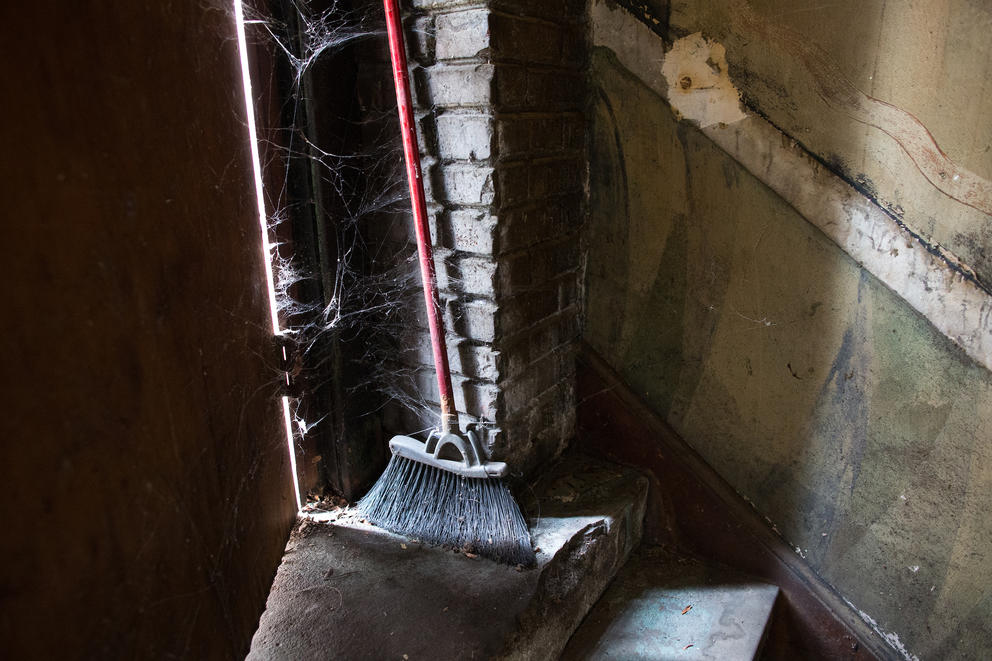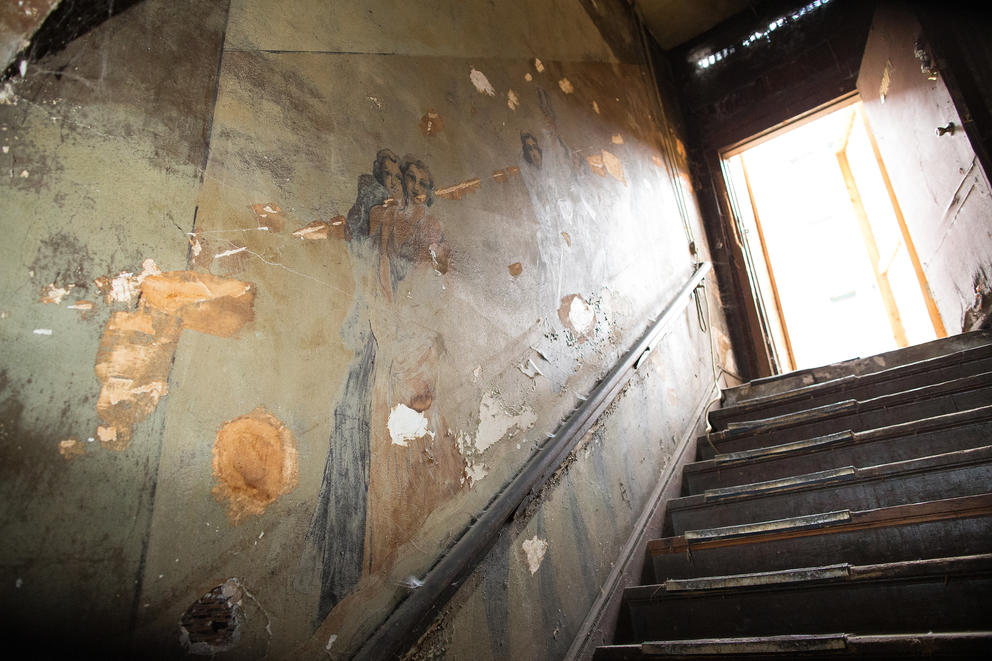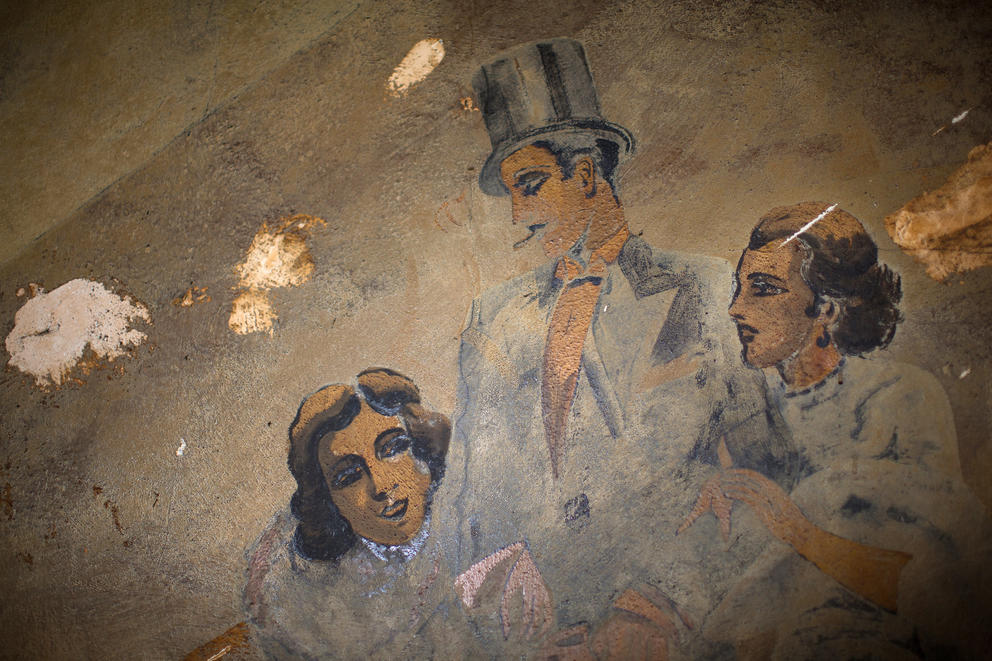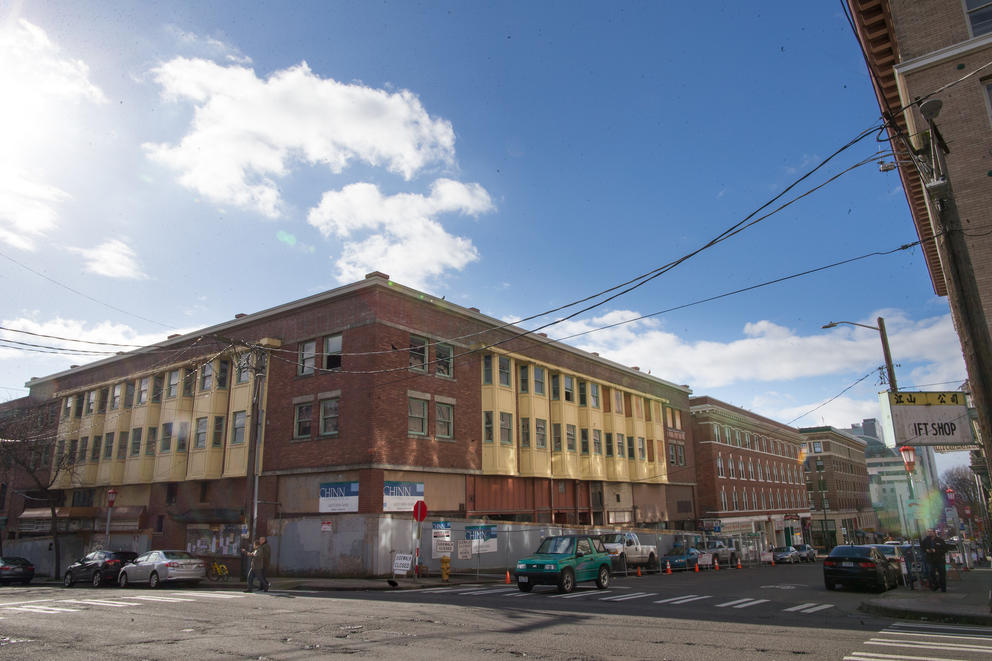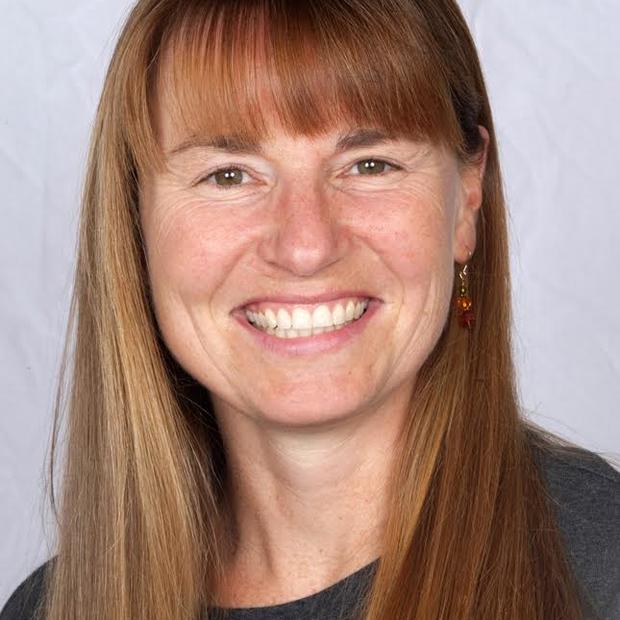In a dark stairwell that leads to a basement, the paintings show all sorts of glamorous couples dressed to the nines in top hats and fur shawls. The images herald Seattle’s bygone era when an underground after-hours jazz club is believed to have been located here.
“It’s like a little time capsule,” says Tanya Woo, whose family has owned the historic building since the 1960s. A Christmas Eve fire in 2013 destroyed part of the building, which eventually triggered the current renovation and revealed these cultural artifacts.
The three-story brick Louisa Hotel was built in 1909 as a single-room occupancy residence for mostly male Asian immigrants who worked the railroads and the Alaskan canneries. Designed by architects Andrew Willatzen and Barry Byrne, it’s the only historic building in the neighborhood that still features old wooden bay windows once common in the era. The building is most infamously known as the site of the 1983 Wah Mee massacre, which claimed the lives of 13 people. It remains the deadliest mass killing by a gunman in the city’s history.
Over the years, a Chinese bakery, a Chinese seafood restaurant, a bookstore, a gift store, a pet store and many other businesses have operated out of the building. But the 2013 fire shut everything down. The building’s most recent activity? “We’ve had a lot of birds,” Woo jokes, referencing the pigeons who have called this place home.
After discovering the jazz club murals, Woo said her family asked local jazz historian Paul de Barros, author of “Jackson Street After Hours: The Roots of Jazz in Seattle,” to come by and take a look. The city's jazz scene included clubs in both the Central District and in Chinatown International District. De Barros, Woo says, believes the murals date back to the 1920s.
The family hopes to secure grants to preserve and restore the murals. In the meantime, a renovation project that will feature affordable housing, new commercial spaces and below-grade parking is underway, slated to open in spring 2019.

